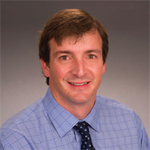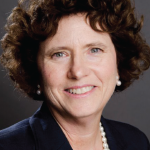
William Robinson, MD, PhD
William Robinson, MD, PhD, first became interested in rheumatology in medical school when he started working with a rheumatologist, as well as several other rheumatology mentors. After completing his residency, he joined the rheumatology fellowship program at Stanford University Medical Center, Palo Alto, Calif., where he earned support for his research from the Rheumatology Research Foundation. A Career Development Award and a small grant from the Foundation propelled his career and allowed him to investigate rheumatic diseases. Now an associate professor at Stanford University, he has his own lab, where he has used further Foundation funding to conduct innovative research and train future rheumatology investigators. The following is an excerpt of an interview the Foundation conducted with Dr. Robinson as part of the organization’s 30th anniversary celebration. He reflects on the impact the Foundation has made on his career and the outcomes of his work by enabling him to go into research and thrive.
Q: How did you first hear about the Foundation’s grant opportunities?
A: I was a young rheumatology fellow at the time and was trying to find funding. There were very, very few options. At a certain point in one’s career, you need the validation that comes with funding from the National Institutes of Health (NIH). The Foundation fills the gaps in NIH funding and is a catalyst that enables young rheumatologists and trainees to advance their research to the point where they can eventually receive that NIH award.
Q: What did receiving a grant mean to you and your career?
A: Receiving a grant gave me scientific and academic recognition. The Foundation has a rigorous scientific peer-review process and provides vital funding. Without it, I would not have been able to pay for salaries and the supplies necessary for my research.
Q: What is the greatest impact you’ve seen the Foundation make in the last 30 years?
A: It has had a huge impact at multiple levels. First, the Foundation has supported trainees and infrastructure for training in teaching and clinical programs. Second, [it has] provided a series of awards that assist fellows in becoming faculty members.
Q: What do you hope to see the Foundation achieve over the next 30 years?
A: There will be opportunities and challenges in the next 30 years. One of the challenges is the shortage of clinical rheumatologists, so the Foundation needs to continue helping expand the workforce even more than they are now. [It needs] to create more physicians and physician-scientists. In addition, the fiscal environment is changing. In the past, NIH grants were not as competitive as they are today. Now, we need to create a funding stream to support the research and careers of investigators in the field of rheumatology.
Q: What do you wish people knew about the Foundation?
A: The Foundation is well known in the field. However, greater exposure among patients and families would further increase awareness. [The Foundation] also needs to get the word out about [its] work, so others can see and appreciate the impact the Foundation is having.
Q: How does the Foundation contribute to a strong and capable workforce?
A: The Foundation contributes to the whole spectrum—[it supports] not only fellows, but also medical students and residents—to expose young people in training to the field. [It shows] young trainees opportunities in rheumatology and then continues supporting them once they’ve made the decision to pursue rheumatology. Essentially, the Foundation promotes and supports learning and training in rheumatology.
Q: Why is it important for ACR/ARHP members to support the Foundation?
A: It is important because this support is what got us all to where we are today, and it’s also our future. People should contribute to causes that they value and are making an impact. I believe the Foundation is doing just that. The Foundation is the mechanism by which the ACR can directly impact the people going into the field.



